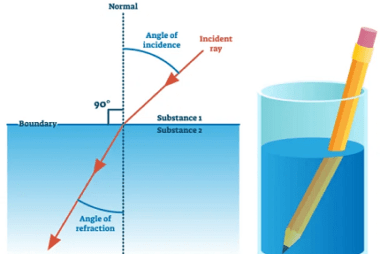Advance Course AIIMS-SYLLABUS Physics syllabus Refraction of light
Refraction of light Refraction of light refers to the bending of light as it passes from one medium to another, such as from air to water or from air to glass. This phenomenon occurs due to the change in the speed of light as it enters a different medium. The key principles of refraction are…









